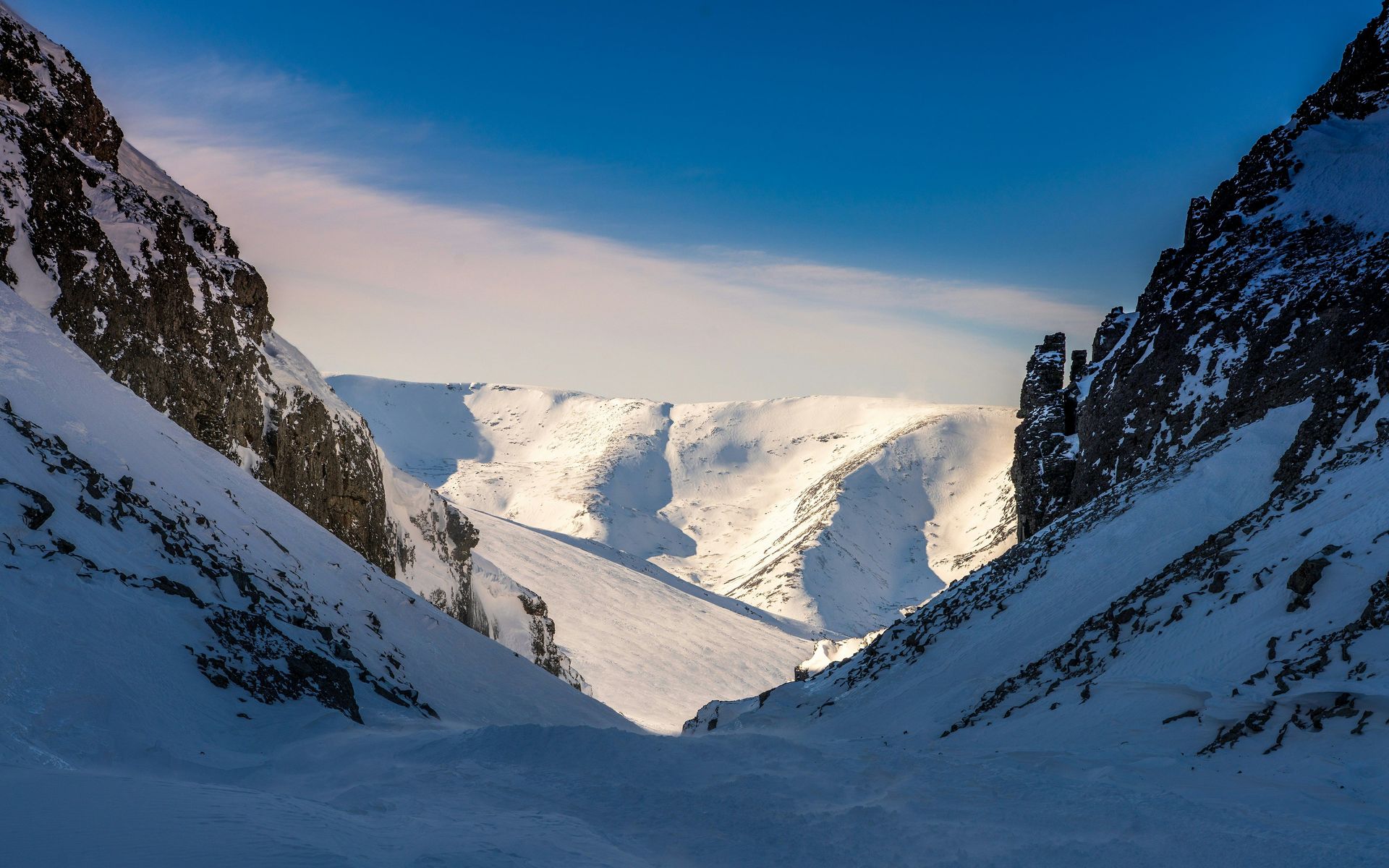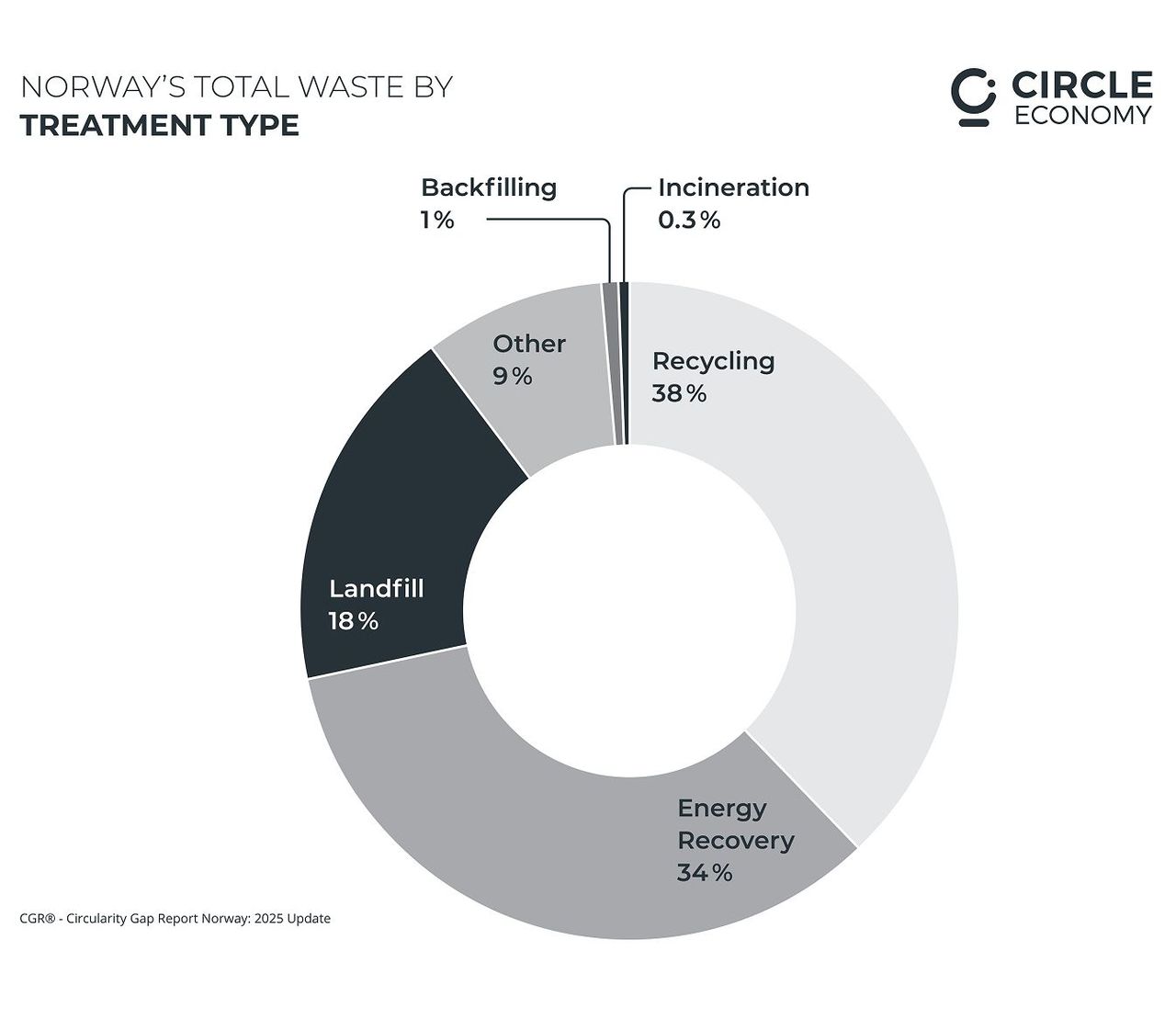
Norway


Waste treatment
Norway's approach to waste treatment is integral to its wider circularity goals: specifically, focusing on minimising the environmental impact of waste and recovering valuable materials from it. In the context of the extended Economy-Wide Material Flow Accounting (EW-MFA) analysis implemented in this report, waste treatment refers to the array of processes used to manage waste after it has been generated. These processes include recycling, anaerobic digestion, composting, incineration, and landfilling, each of which contribute to reducing waste volumes, mitigating environmental harm, and potentially reclaiming valuable materials. [55]
In alignment with its environmental targets, Norway aims to ensure that growth in waste generation is significantly lower than its economic growth.[56] This objective was largely met, as uncovered in our analysis: between 2018 and 2022, while the economy grew by a substantial 35%,[57] waste grew by only 2.6%. However, despite this progress, the overall trend of waste generation is on the rise, reflecting ongoing challenges in waste reduction. Another crucial target is the reduction of emissions from hazardous substances that impact health and the environment. In line with this, Norway took significant steps in 2017 when the government and the food industry entered an agreement to tackle food waste. This collaboration aligns with the UN’s sustainability goal of halving food waste by 2030, covering both the trade and consumer sectors, as well as addressing losses during production and wholesale.[58]
Material flows and waste
The data presented in Table 11 details the total waste treated in 2022, broken down by type, while Figure eight provides a visual breakdown of how these wastes are processed by different treatment operations. The data for this analysis, while aligned with the original Eurostat classification for waste treatment (env_wastrt dataset),[59] was adjusted to match the EW-MFA system boundaries. For instance, dredging spoils and soils—materials like soil and rock from construction or mining—are excluded, as they are considered waste resulting from unused extraction and have no economic value in statistical terms.[60]
In 2022, Norway treated 12 million tonnes of primary waste from used extraction (excluding organic waste returned to the environment), a slight increase from 11.7 million tonnes in 2018. ‘Used’ refers to materials that result directly from extraction activities and are regarded as products with economic value, while ‘primary’ waste refers to waste that does not result from waste treatment. ‘Reported’ waste includes those recorded in official statistics.[61]
The breakdown of different types of waste can be seen in Table 11, with Figure eight illustrating the distribution of treatment methods. Altogether, the total End-of-Life (EoL) waste amounts to 14.8 million tonnes. This includes 10.5 million tonnes of Domestic Processed Output (DPO) from material and energy use and 4.3 million tonnes of materials designated for recycling, which are recirculated back into the economy as secondary materials.
In addition to the reported waste, an estimated 36.8 million tonnes of used materials were released or dispersed into the environment in 2022. This includes waste from both fossil and biogenic sources. The fossil-origin waste primarily consists of carbon emissions from the combustion of fossil hydrocarbons, while biogenic-origin waste includes methane emissions from enteric fermentation and animal waste. Of this total, 29.2 million tonnes are emissions of fossil origin, and 7.5 million tonnes are biogenic-origin emissions. When combined, the total DPO from both material use and energy use amounts to 47.3 million tonnes. This total reflects the waste generated from both materials and energy sources, including food and feed, that are released into the environment during their lifecycle.
Beyond the waste and emissions, another 75.9 million tonnes of materials were added to stock in the form of capital investments, such as buildings, infrastructure, machinery, and equipment. This represents materials that are not disposed of but are instead incorporated into the economy as durable assets, contributing to long-term societal infrastructure.
Table four depicts the waste types of total waste treated, using 2022 as a baseline year and Eurostat’s classification.

Figure six shows waste treatment (from used extraction) in Norway across five different types: landfilling, recycling, energy recovery, backfilling, and other waste disposal.
Figure eight shows waste treatment (from used extraction) in Norway across five different types: landfilling, recycling, energy recovery, backfilling, and other waste disposal.
In 2022, Norway managed reported primary waste from used extraction through five main treatment methods: recycling, energy recovery, landfilling, backfilling, and other waste disposal. Together, these methods illustrate the country's efforts to manage waste sustainably while addressing environmental concerns.
The Circularity Gap Report is an initiative of Circle Economy, an impact organisation dedicated to accelerating the transition to the circular economy.
© 2008 - Present | RSIN 850278983